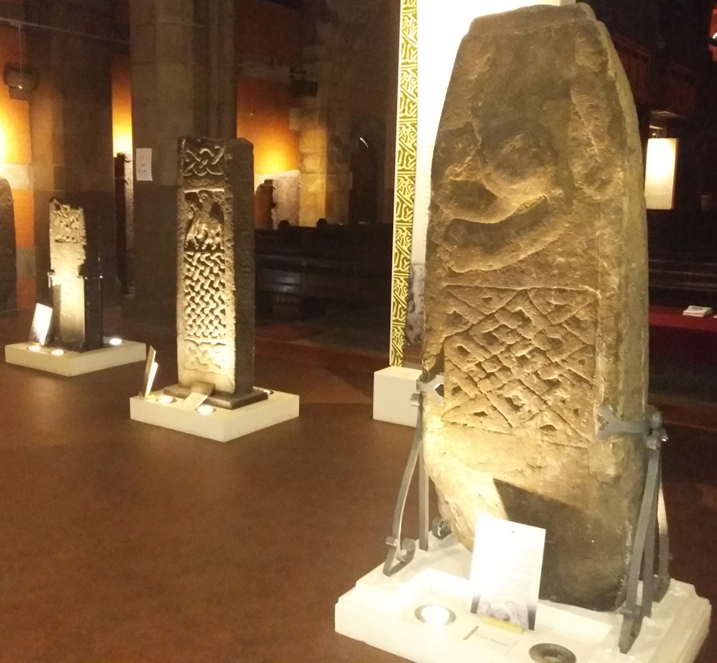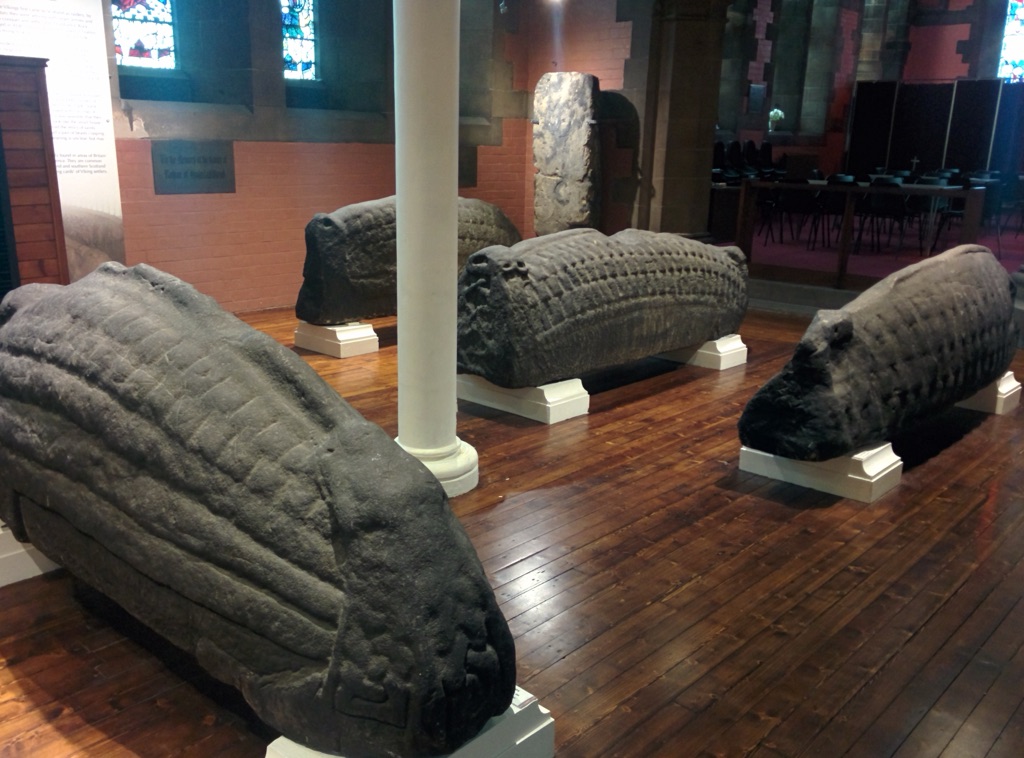The Govan Stones: A Testament to Early Medieval Scotland’s Power and Artistry
The Govan Stones, housed within Govan Old Parish Church in Glasgow, Scotland, represent a significant collection of early-medieval carved stones of international importance. This collection, originating from the churchyard of the same site, encompasses a variety of monumental sculptures including the unique Govan Sarcophagus, four standing crosses, five Anglo-Scandinavian hogbacks, and numerous recumbent burial monuments. These artifacts, predominantly dating from the 9th to the 11th centuries AD, offer profound insights into the religious, cultural, and political life of the period.
Get your dose of History via Email
Historical Context
The Govan Stones are believed to have been commissioned by the rulers of the Brittonic Kingdom of Strathclyde, a political entity that emerged in the wake of Viking incursions into the Clyde region. The Annals of Ulster document the Viking siege and subsequent destruction of Dumbarton Rock, a strategic stronghold of the kingdom, in AD 870. This event precipitated the relocation of the political center to Govan, marking it as a significant ecclesiastical and royal site. The presence of Viking-influenced hogback stones further indicates the complex cultural and political interactions between the native Britons and Scandinavian settlers.
The Govan Sarcophagus
The centerpiece of the collection, the Govan Sarcophagus, is a remarkable artifact carved from solid sandstone. It is thought to commemorate St. Constantine and features intricate carvings, including a Pictish-style stag hunting scene. This sarcophagus is unparalleled in pre-Norman, Northern Britain, highlighting the artistic and religious significance of Govan during the early medieval period.
Govan Hogbacks
The collection includes five hogback stones, a type of monument associated with Viking settlements in northern Britain. These stones, designed to mimic Scandinavian longhouses, underscore the Scandinavian influence in Govan. The largest of these, found nowhere else in such dimensions, suggests a strong connection between the Kingdom of Strathclyde and the Scandinavian world.
Crosses and Upright Cross-Slabs
The Govan Stones collection also features two cross-shafts and two upright cross-slabs, including the notable Govan Cross and the ‘Inverted’ Cross. These monuments, decorated with intricate interlace patterns, are indicative of the rich Christian heritage and artistic craftsmanship of the period.

Recumbent Cross-Slabs
The collection contains twenty-one recumbent cross-slabs, which, despite their varied states of preservation, provide valuable insights into the funerary practices and artistic motifs of early medieval Scotland. These stones, with their distinctive crosses and decorative elements, reflect the broader religious and cultural milieu of the time.
Recent Discoveries and Significance
The rediscovery of previously thought lost stones in recent years, including the notable ‘Govan Warrior’, has reinvigorated interest in the Govan Stones. These findings underscore the site’s significance as a major early medieval center of power and artistry. The collection’s recognition, both nationally and internationally, as evidenced by its inclusion in the British Museum’s exhibition and its status as Scotland’s best ‘hidden gem’, attests to its historical and cultural importance.
Conclusion
The Govan Stones offer a unique window into the early medieval period in Scotland, reflecting the complex interplay of cultural, political, and religious forces at play. The collection, through its remarkable craftsmanship and historical significance, continues to attract scholars, historians, and visitors, contributing to our understanding of Scotland’s rich heritage.
Sources:
Wikipedia

